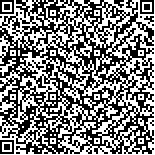| 摘要: |
| [目的]分析新型城镇化与土地集约利用的时空演变特征,在此基础上探索新型城镇化与土地集约利用的关系。[方法]基于数据可获取性及科学性等原则,选取新型城镇化与土地集约利用的指标,利用熵权TOPSIS法测算2007—2016年重庆市新型城镇化与土地集约利用的指数,并利用GIS软件制作空间分布图,引入空间计量模型分析新型城镇化与土地集约利用的空间关系。[结果](1)在时间特征方面,重庆市新型城镇化及土地集约利用水平均呈现平稳提高趋势; 在空间特征方面,重庆市新型城镇化与土地集约利用空间变化显著。(2)新型城镇化与土地集约利用的时空变化规律较为相似,新型城镇化对土地集约利用确实存在促进作用。[结论]在重庆市土地资源需求急剧增长的前提下,加快推进新型城镇化建设,以改善土地低效利用,制定切合实际的土地利用规划、优化产业布局、促进城镇合理建设,侧向推动土地集约利用。 |
| 关键词: 新型城镇化土地集约利用时空演变关系重庆市 |
| DOI: |
| 分类号:F29921; F3012; F224 |
| 基金项目:教育部人文社会科学规划基金项目“新型城镇化背景下农民土地财产收益实现渠道与改革路径研究”(14YJAZH097) |
|
| SPATIAL TEMPORAL EVOLUTION AND RELATIONSHIP BETWEEN NEW URBANIZATION AND LAND INTENSIVE USE |
|
Zeng Weijia
|
|
School of Geographical Sciences, Southwest University, Chongqing 400715, China
|
| Abstract: |
| This research aims to analyze spatial and temporal evolution of new urbanization and intensive utilization of land, and on this basis to explore the relationship between new urbanization and land intensive use Based on the principles of data accessibility and scientificity, indexes of new urbanization and land intensive use were selected, and the entropy weight TOPSIS method was used to calculate indexes of new type urbanization and land intensive use in Chongqing from 2007 to 2016. Spatial distribution map was made by using GIS software, and spatial econometric model was introduced to analyze the spatial relationship between new type urbanization and land intensive use. The results showed that (1) In terms of time characteristics, the new urbanization and land intensive utilization in Chongqing both showed a steady increase trend; In terms of spatial characteristics, the spatial changes of new urbanization and land intensive use in Chongqing were significant.(2) The spatial and temporal change rules of new urbanization and land intensive use were similar, and new urbanization did promote land intensive use. Under the premise of the rapid growth of land resource demand in Chongqing, it is necessary to accelerate the construction of new urbanization to improve the inefficient use of land, formulate practical land use planning, optimize industrial layout, promote the rational construction of cities and towns, and promote the lateral intensive use of land. |
| Key words: new urbanization land use intensification spatial temporal evolution relationship Chongqing |

